venison / Deer ribs are good to eat, but they take a little practice to get right. If you follow my directions here, you might never throw them out again.
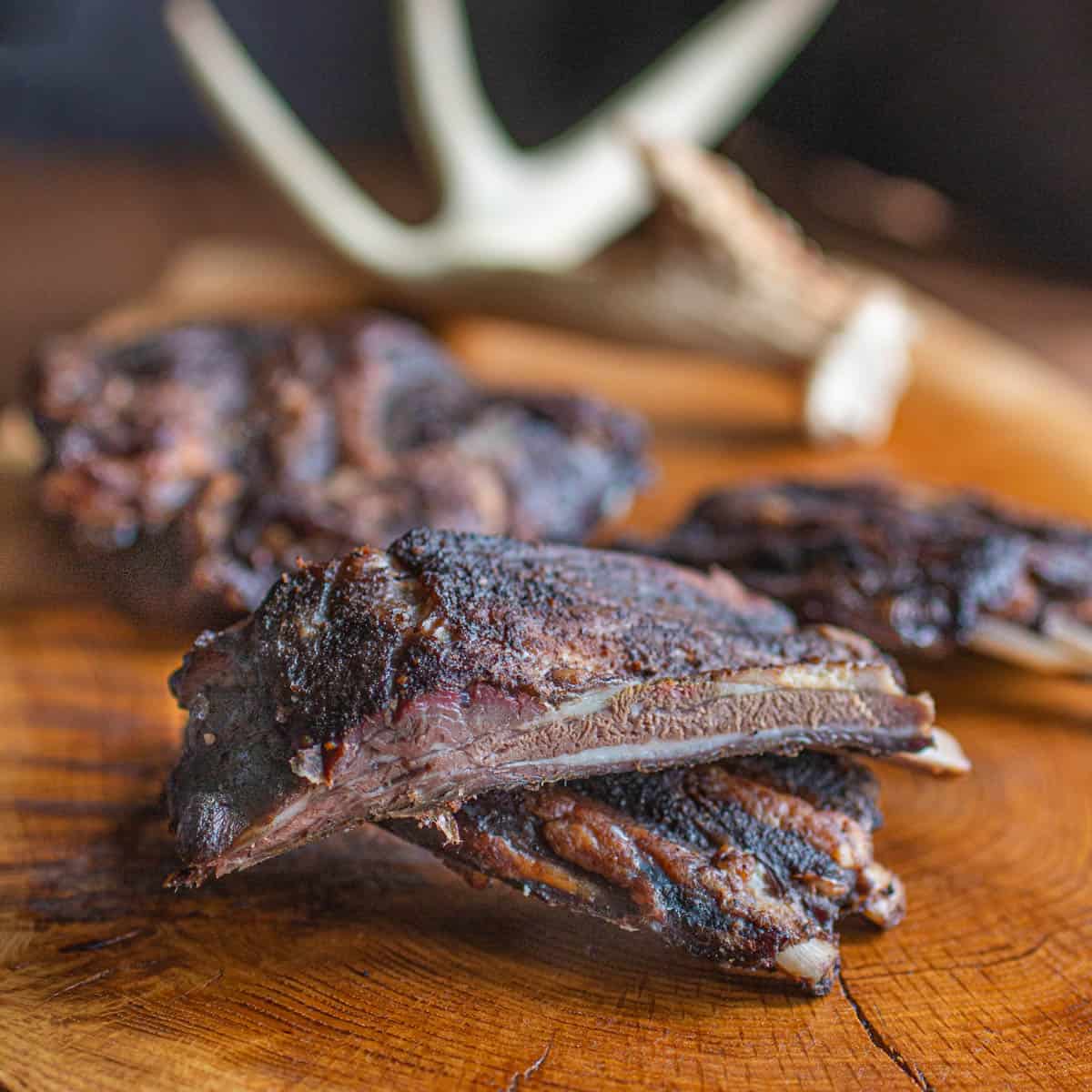
There's a lot of overlooked cuts on a deer, but ribs are probably one of the most commonly left on the carcass or tossed into the coyote pile. It's a shame, since they can be great if they're prepped right, but I also understand why a lot of people don't harvest and cook venison ribs.
1.Cut ribs to a size you can eat
Harvesting the ribs from deer isn't as easy or clean like fileting off a backstrap. You need to have a saw on hand, and with either a hand saw and a sawzall or reciprocating saw (my preference) it's still a challenge to cut nice looking, clean cuts, especially if you're processing your deer alone, as many people still do, including myself more often than not.
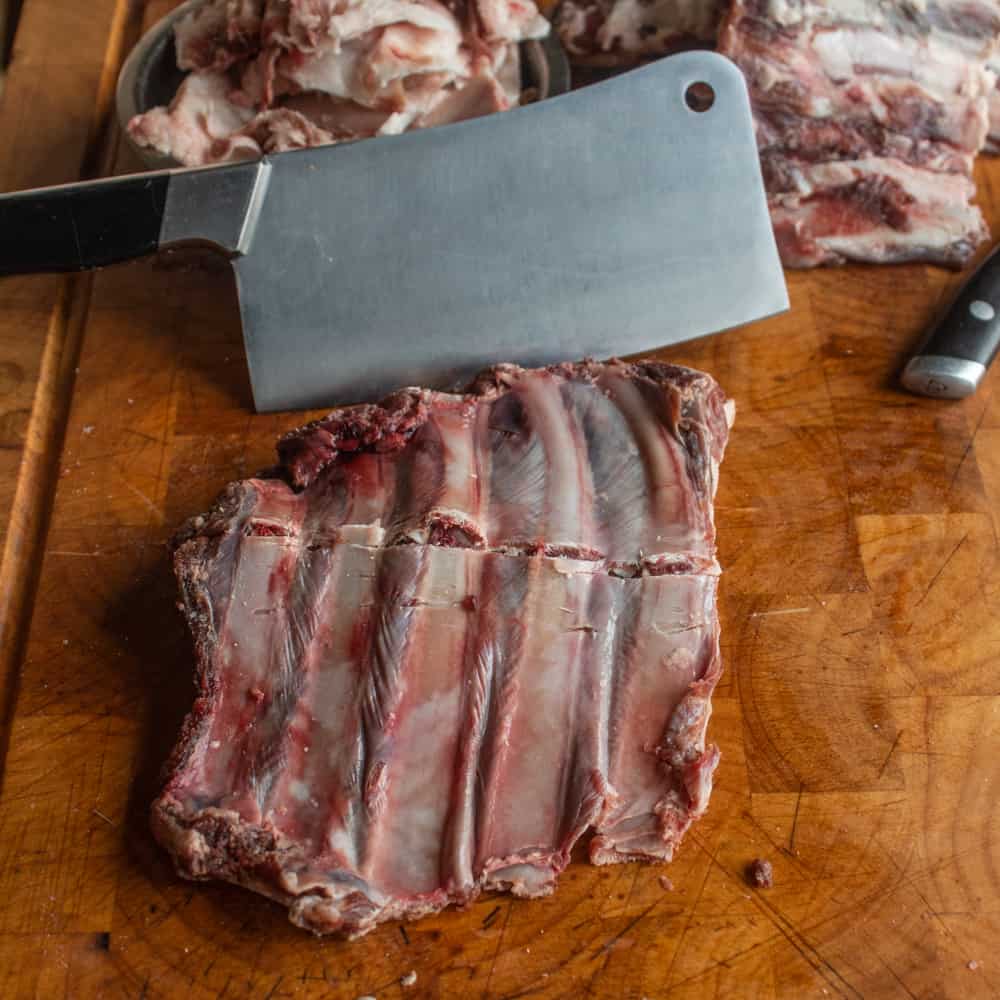
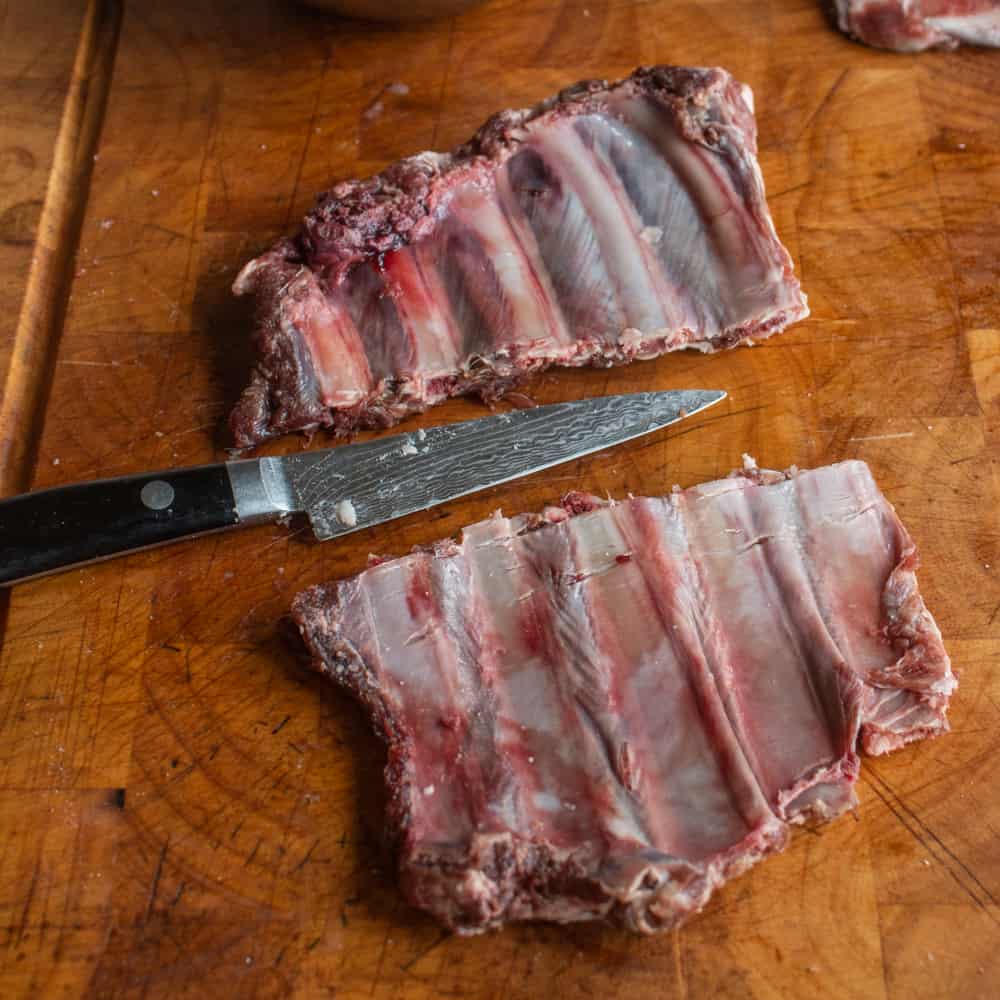
The exact size you cut your deer ribs can be a matter of personal preference, but I will say that just cooking the whole rack like a caveman is sloppy, and is pretty much guaranteed to turn off diners of a more delicate palate, say, a significant other who you may be trying to turn to the wild side, for example. With venison ribs, good things come in small, or at least modest packages.
2.Trim them *really* well
Secondly, venison ribs are generally very lean as far as meat goes, but they have plenty of fat on them, and, unless you like the taste of deer chapstick, or are looking for food that will instantly put you to sleep, you're going to want to trim them, meticulously.
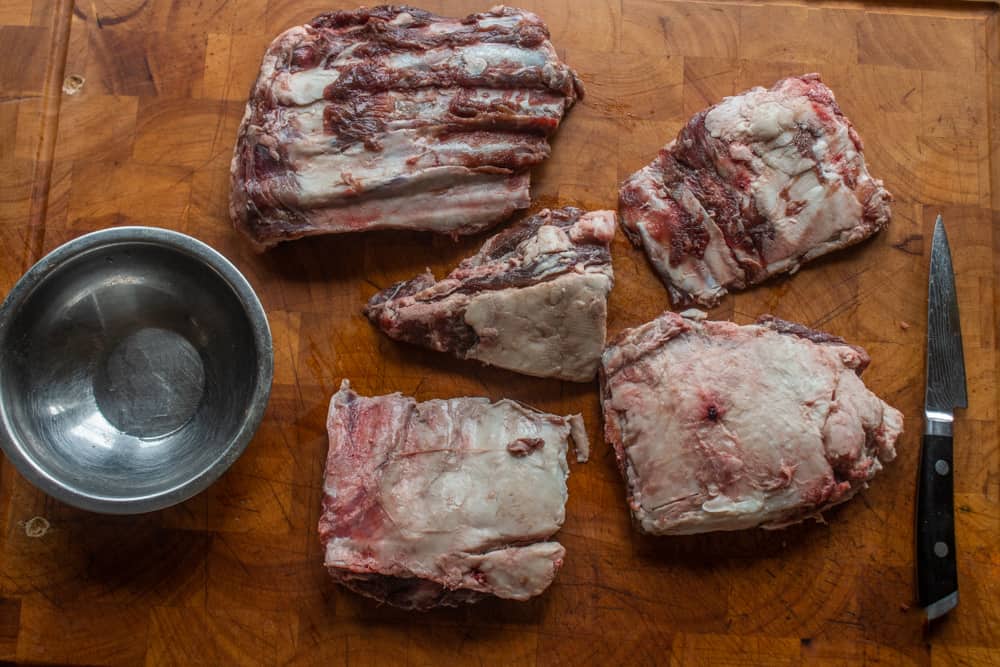
Years of restaurant work (and more importantly diner feedback) taught me a few things. With lamb ribs, there's generally more meat on them but even then, there's a large vein of fat that runs through them that I prefer to trim off.
Diners liked the look of big, bountiful lamb ribs, but when the plates came back, there were always piles of fat and trim that went untouched. Eventually I got the idea to just trim the heck out of them, and it made all the difference. Deer ribs are the same.
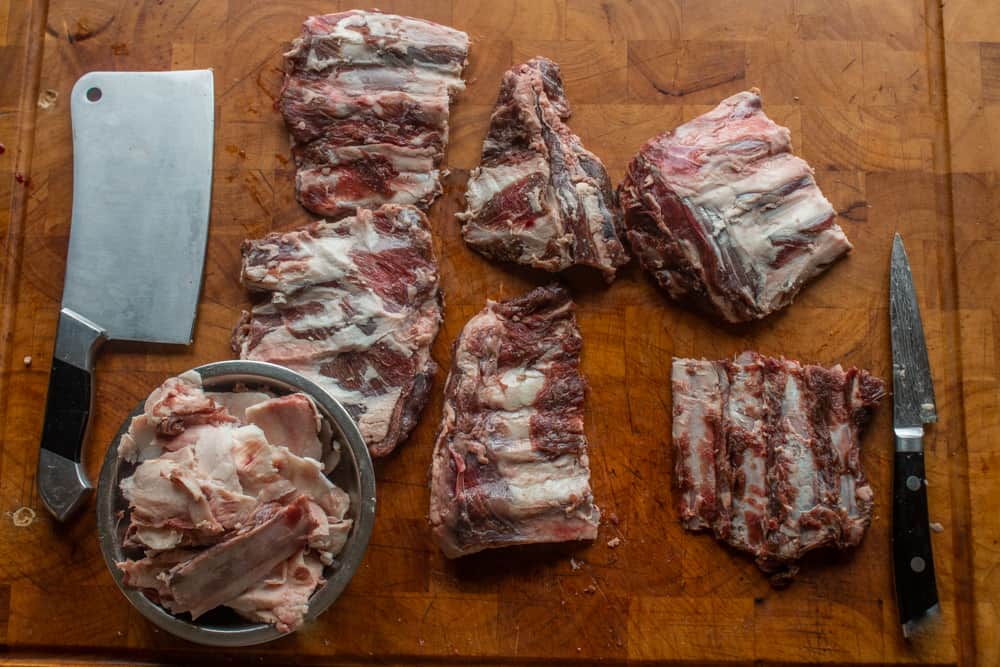
The tricky part though, is that for the best tasting deer ribs, you know, the type where you could sit down and eat an entire rack, you need to trim the ribs of fat really, really well.
After trimming, the racks of ribs you end up with won't really resemble the meaty, chunky pork ribs most people think of when they think ribs. What you get, rather, are ribs that honestly look a little measly, or wimpy, and you might find yourself wondering "where's the meat on these things?!". Patience is a virtue though, and the small amount of meat that's left in between the bones is worth it's weight in gold. Trust me.
3.Remove the membrane (optional)
The other, slightly less-important thing to mention about preparing venison ribs for cooking is the membrane on the side of the ribs that houses the organs. Venison, pork, lamb, beef--whatever ribs you cook will have the membrane, and, for the most professional result, you'll want to remove it.
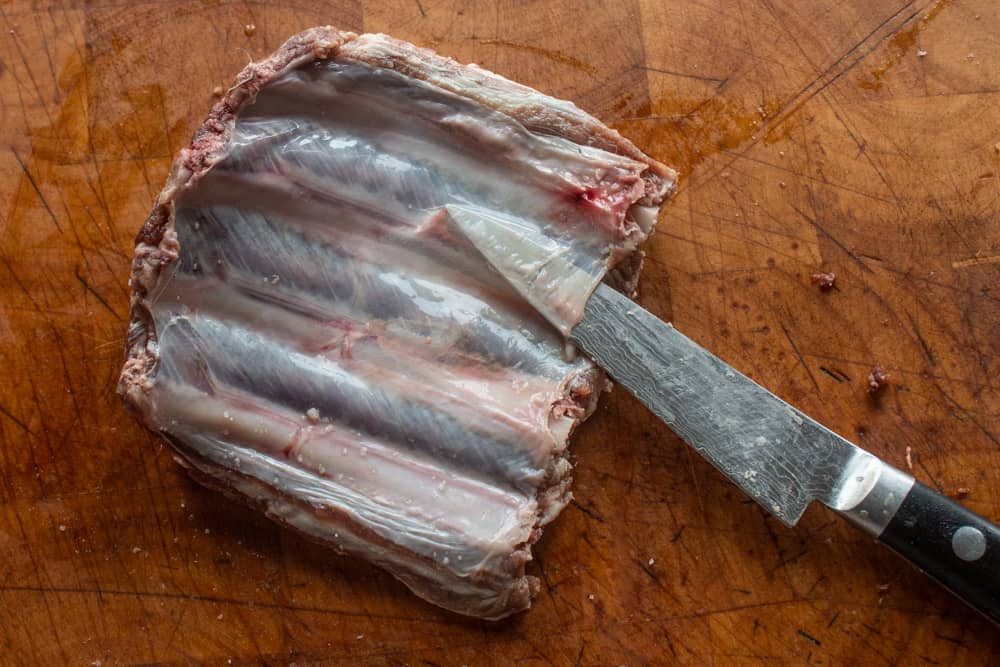
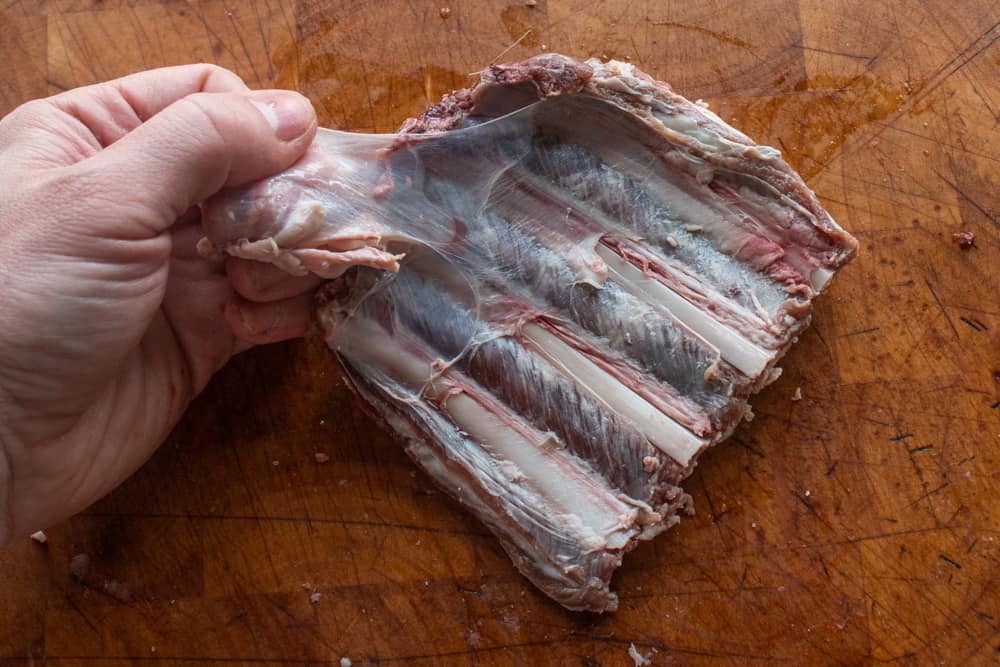
It's not that hard, slip a paring knife under it to loosen it and from there most of it can simply be peeled off with your hands. That being said, many people don't mind the membrane, and, most people won't notice if you can't get them 100% clean. Just something to consider.
4.Use a combo of wet and dry cooking
After trimming the ribs to an inch of their life, you're going to be left with some lean ribs--really lean. Lean enough that if you're not keeping an eye on them, it can be easy for them to dry out. With that in mind, I recommend a slightly different approach to cooking them than pork or lamb ribs, which I generally cook all the way on the smoker.
There's a number of ways you can ensure juicy, tender venison ribs, but here's one of the easiest ways I do it: take the ribs, cut them into small racks about 3-4 bones a piece, then season them up with whatever your poison is (I like my friend Chef Mike Germans 14 Spice, but my blackening spice here would be great too) and let them sit for 12-24 hours in the fridge.
If you don't have time, you can cook them right away, but, the flavor will be much better if you let them sit and dry brine for a bit if you can--even just a couple hours can make a big difference.
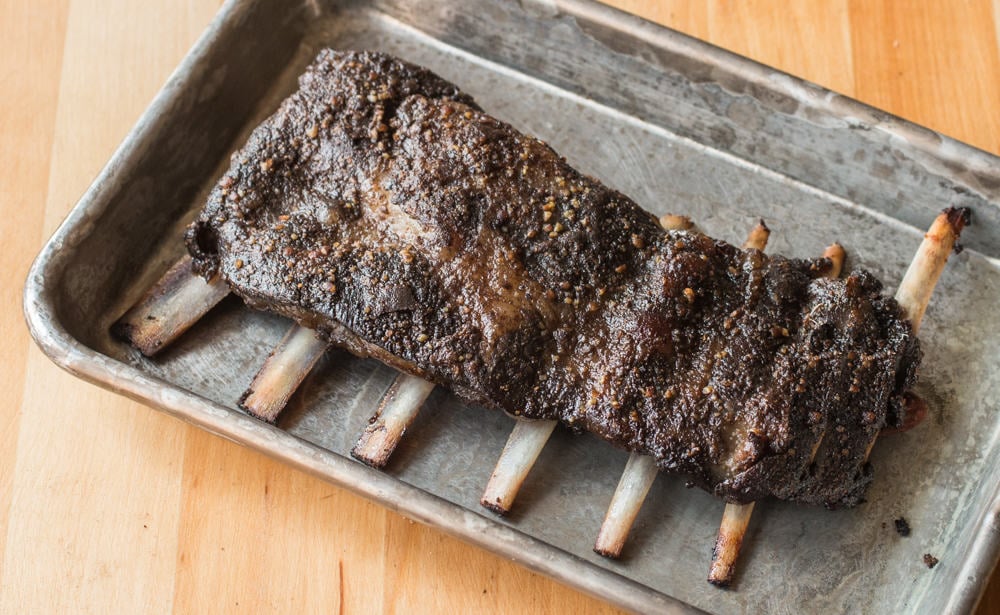
Next, put your ribs on a cookie sheet with a lip on it to prevent drips, top with a piece of parchment, add a splash of water to the pan (½ cup for a standard cookie sheet) wrap in foil, and bake at 250 for 1 hour. Next, remove the ribs, and smoke for another 1.5 hours at 250, or until the meat just barely gives from the bones.
5.Try not to over cook them
I don't like my ribs falling off the bone, and, if you were to enter ribs in a barbecue challenge, you'd get docked point for sloppy, fall-off-the bone ribs. You should have to barely work to pull the meat off.
If you have a way to keep ribs moist while cooking, say by putting a steam tray full of water in the smoker, that can work too, and you wouldn't have to par-cook them in the oven. Like I said, there's a number of ways to baby the ribs while they cook.
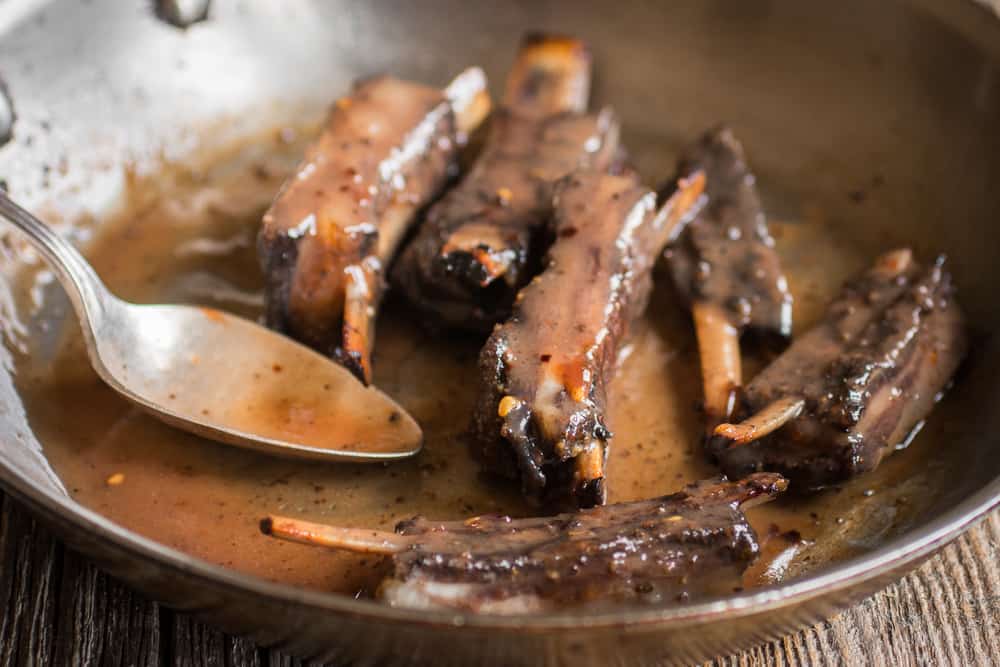
How to Cook Venison Ribs
Equipment
- 1 Sawsall or a bone saw
- 1 cleaver optional
- 1 Smoker
Ingredients
- Venison ribs as needed
- Seasonings, like your favorite dry rub, or just salt and pepper
Instructions
Cut the ribs into manageable sections
- Using a reciprocating saw, cut the ribs off the deer into 5-6 inch wide racks. If you took the ribs off in large pieces, you may need to whack them with a cleaver as pictured. This takes some practice.
Trim the fat
- Using a trusty paring knife, trim as much fat as you can from the top of the ribs.
Remove the membrane (optional)
- Slide the end of a paring knife under the membrane on the underside of the ribs, then pull off and discard the membrane.
Par Cook and Smoke *(See note)
- Season the ribs with your preferred seasoning (a like a good dry rub) then refrigerate overnight or at least for a few hours.
- Preheat an oven to 250F. Put the ribs on a cookie sheet or tray with a lip to catch liquid, top them with parchment, add ½ cup water to the pan, cover tightly with foil (you want them to steam) and bake for 1 hour. Remove the ribs and smoke for 1.5 hours at 250F, or until the meat barely gives from the bone.
- Serve the ribs as-is, or, trim thick ones into single bones, and saute slowly to render out more fat.
Video
Notes
Deer Ribs in the Oven
*If you don't have a smoker, you can cook the deer ribs all the way in the oven, uncovering them for the last hour to lightly brown them (or turn up the heat a bit). Chili Dry Rub This is a nice all-purpose rub I use specifically for red meats. Makes enough to lightly season ribs from 1 deer.- ¼ cup Ancho chili powder
- 3 T onion powder
- 1 tablespoon garlic powder
- 1 teaspoon cinnamon
- 1 teaspoon fresh ground black pepper
- ½ teaspoon cayenne pepper
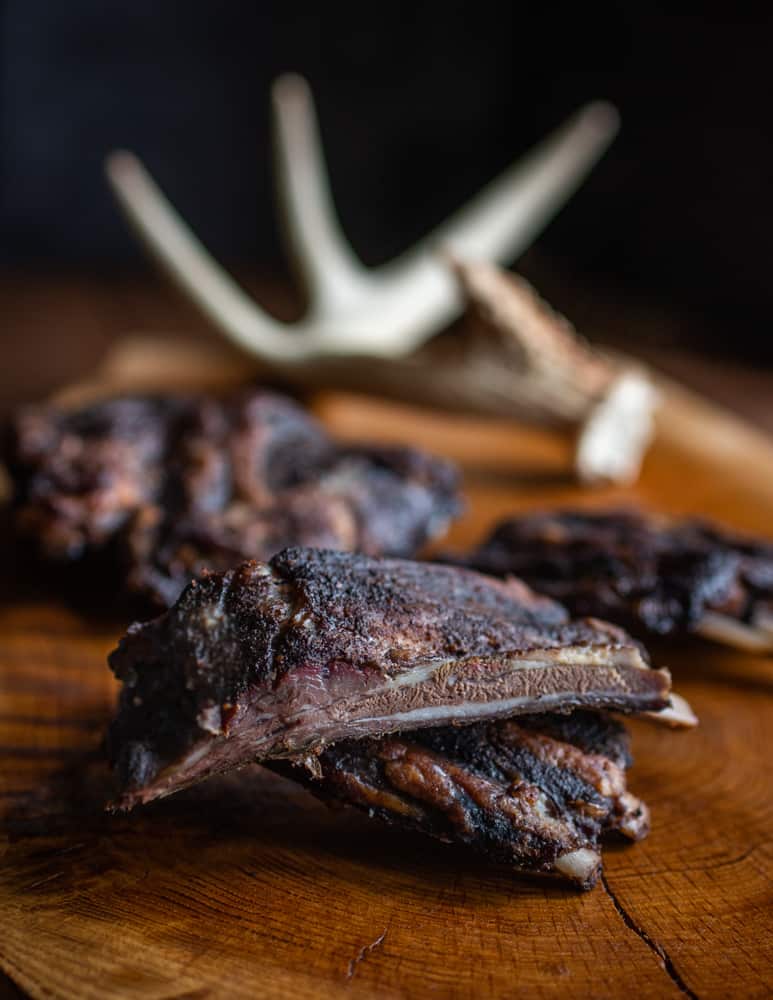

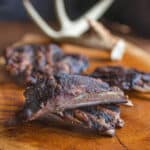
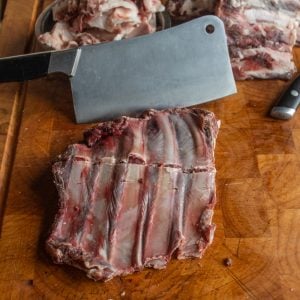
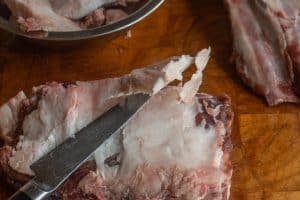

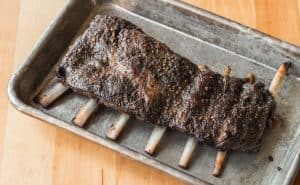
Amy in Alabama
So if the ribs are cooked in the oven for the full time (sans smoker) do you remove the foil at any point or steam them the whole time? Thanks!
Alan Bergo
Steam them the whole time. When you serve them, cut them into pieces and fry the cut sides in a pan to crisp them up. That's one of the secrets to getting out as much fat as possible.
Abby
Can I use the oven for both rounds of cooking? I don't have a smoker. If so, is there any way you recommend to make up for flavor I'd miss out on without the smoker?
Alan Bergo
Yes you can use the oven. It's fine to not use a smoker, use your favorite rub and season them like any other ribs. Just make sure to cook them until they're tender and taste good to you. Wrapping them in parchment during cooking, or steaming/baking in a covered vessel with a splash of water will make sure they don't dry out.
Thom
Nice article. I have been a career cook of 35 years. I was given a couple racks and was wondering where to go with it. Knowing that they can be dry assed doggy treats easier than most meat.
Your article was good. I may go that way. I was also thinking of braising them and removing the meat from the bone and serving it in a mushroom sort of Demi glaze over noodles.
Thanks
Man! Tbb
Alan Bergo
Thanks Thom, I'm here if you have any questions. Make sure to take a look at my method for boneless venison ribs too.
MARK BRENNER
Just to clarify, I used your Blackening spice that you suggested would work well with this recipe
Mark
Mark Brenner
As a hunter, fisherman, and wild mushroom and berry gatherer, I was excited to find your site. I want to try this rib recipe with a deer I just got but I wanted to check on one thing. Most dry rubs have salt in them but this one does not. You even call it a brine at one point so I am wondering if this is a typo/omission or if it indeed does not have any salt in the recipe.
Thanks
Alan Bergo
Hey Mark, thanks for commenting. Great question, let me clear that up:
In my world salt is never added to spice blends. I know most commercial spice blends include salt, but you'll be able to control the amount of salt much better if you season the meat with salt and apply the rub afterward. For example, if you put salt in your blackening spice it could ruin a dish that calls for dredging the meat completely in it, as with blackened cat fish, but if you season it with salt before applying the rub or dredge, it will be perfectly, evenly seasoned every time. Re: brine and marinade, seasoning meat with salt and allowing it to rest before cooking is known as a dry brine, some people might call it a dry marinade too.
Kristin
So this may be a silly question, but is the brisket still attached to the ribs, or has the brisket been removed to cook separately? This will be our first time using the deer ribs.
Alan Bergo
Remove the brisket and use it to make venison bacon.
Patronella
It's my first time to try to cook dear ribs, I hope it will cooks perfectly. Thanks for the recipes.
Alan Bergo
Thanks Patronella. I'm always here to answer questions if you need. Usually within 6-8 hours.
Suzan
Thank you. I am goin to try this method. A friend caught a deer last night and brought me some. I had no idea what to do with it. I got the heart, liver and ribs. I was about to soak it in limes. He stop me and dl me to us flour instead.
Alan Bergo
You’re welcome